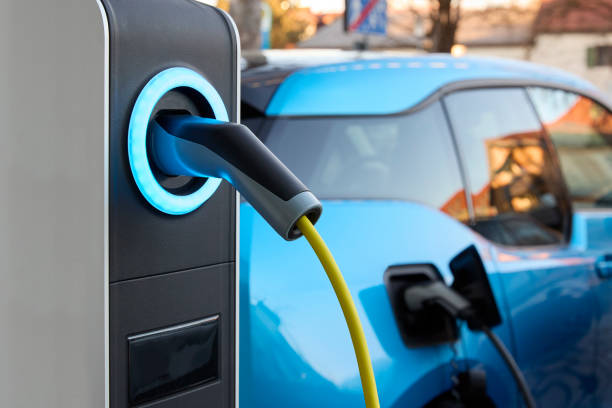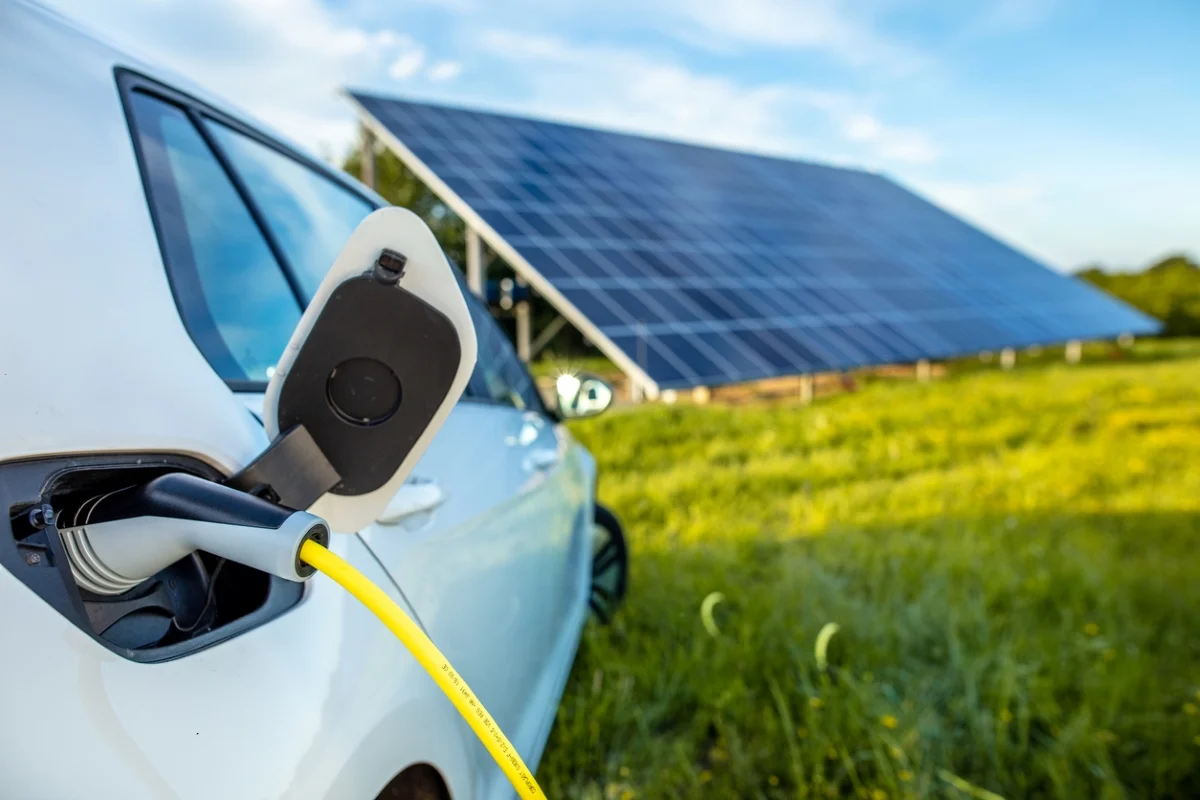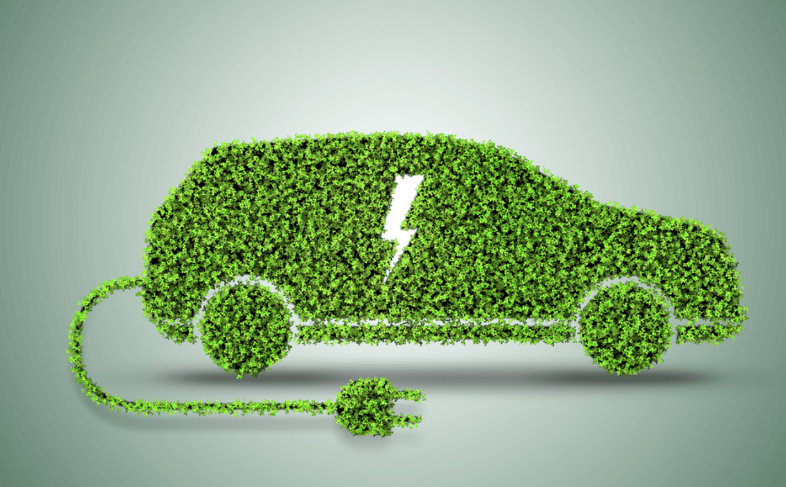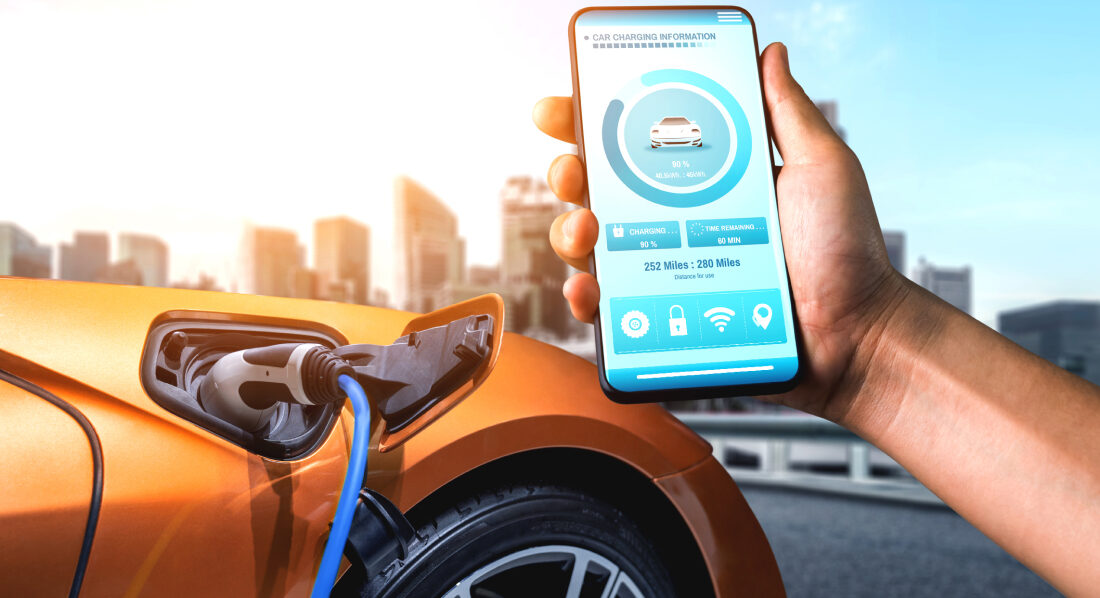- The best home EV charger is the Myenergi Zappi
- An electric vehicle charger can save you hundreds of pounds per year
- You can buy top chargers for less than £800
You want the best home charger for the cheapest price possible, especially when a EV charger costs £1,000 on average – not a small amount in a cost of living crisis.
So over the course of 36 hours, four of our researchers – including me – analysed 16 factors in 21 home EV chargers made by 18 different manufacturers.
The prices on this page are estimates, and the final figure may depend on your circumstances – so make sure to shop around to get the best installation quote.
Fortunately, we can help you compare electric vehicle charging point prices. Just provide a few quick details, and our expert installers will be in touch with free quotes – exactly what you want in a cost of living crisis.
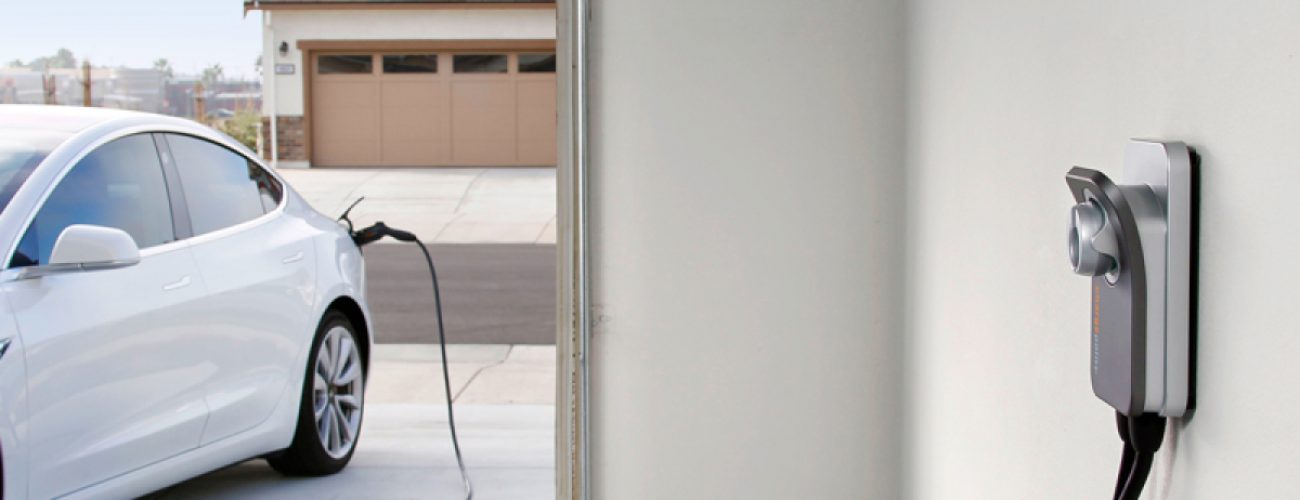
What's on this page?
1. Best for all-round: Myenergi Zappi (£779)
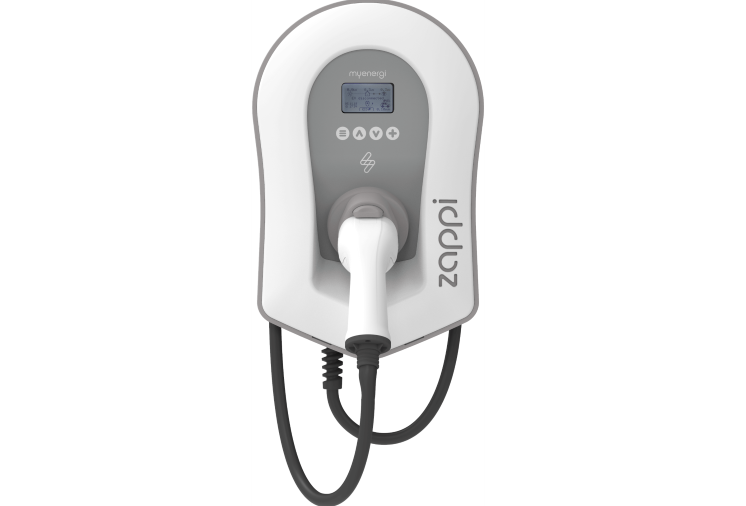
Why is Myenergi Zappi best for all-round?
The Myenergi Zappi is the best all-rounder because of its three modes, which give you the flexibility to focus at different times on using solar energy, saving money, and charging as quickly as possible. It also comes with a fantastic, easy-to-use app.
The Zappi is fantastic – and it’s the only charger to get if you have solar panels, or plan to get an array soon.
This model has three charging modes: Fast, Eco, and Eco+. If you choose Eco+, then instead of sending your surplus solar energy back to the National Grid, the charger will automatically redirect it to your electric vehicle.
On Eco, your charger will adjust to the energy usage of your home. This means it won’t overload the system, or charge up when your tariff costs you the most.
And if you’re in a rush and just need to get your car charged as quickly as possible, Fast is ready to provide.
The app is also top-notch, with an intuitive design that easily allows you to see where your vehicle’s energy is coming from. All you’ll need to do is choose which charging mode suits you.
All the chargers on this list are 7 kW fast models, giving your car 25 miles of range for every hour of charge – and this is your best choice.
And like all the best chargers these days, you don’t need to worry about installing a potentially unsightly earth rod. Beautiful.
Myenergi Zappi pros & cons
Pros
- Best for solar panel owners
- Three excellent charging modes
- Great value
- Top-notch app
Cons
- Heavier than average
2. Best for saving money: Ohme Home Pro (£949)

Why is Ohme Home Pro best for saving money?
The Ohme Home Pro saves you money by connecting to your electricity tariff and only charging your car when it’ll cost you the least. It’s only useful when combined with a time-of-use tariff, though.
Ohme’s model can sync up with your electricity tariff, meaning it can charge up when it’s cheapest for you.
Just let it know how many miles you’d like to charge, and by what time, and the machine will do the rest.
On its site, Ohme promises that “when used with a dynamic time-of-use tariff, savings of £300 per year are readily achievable.”
A couple of home chargers have this attribute, including the Zappi, but it’s still a rare quality that you should embrace – after all, who doesn’t want to cut their energy bills?
Another attractive feature is that it can use 3G or 4G instead of wifi, meaning you won’t have to worry about power cuts or your internet connection when it comes to charging your car.
It’s also pretty small. At just 3,400 cm³, it’ll fit practically anywhere.
Ohme Home Pro pros & cons
Pros
- Can charge when it’s cheapest
- Can use 3G or 4G instead of wifi
- Relatively small
Cons
- Slightly overpriced
3. Best for blending in: Wallbox Pulsar Plus (£1,064)
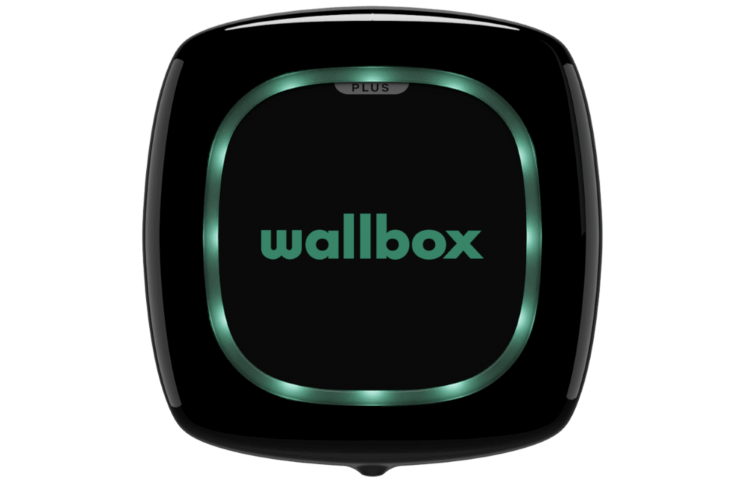
Why is Wallbox Pulsar Plus best for blending in?
The Wallbox Pulsar Plus is the lightest, smallest home charger on the market at the moment – and with its dark appearance and subtle green light, you’ll barely notice it in time.
Wallbox’s model has a compact design that alludes to science fiction, with its green light shining against a black background.
The MyWallbox app is one of the best around. It’s easy to use and connects through wifi or Bluetooth, meaning you can use it even if your home’s internet connection doesn’t stretch to your driveway or garage.
You can set up schedules through the app, monitor the charging as it happens, and even lock the charger when you’re not using it.
An earth rod also isn’t needed, which is true for all the best machines.
Unlike most chargers, it’s only available in a tethered option, with a 5m cable – but of course, that’s perfect if you intended to go for a tethered option anyway.
It’s also extremely small, which is perfect if you want your charger to be a subtle addition to your home, rather than a statement piece.
Wallbox Pulsar Plus pros & cons
Pros
- Smallest top-tier EV charger
- Lightest around, at just 1 kg
- Great app
Cons
- More expensive than average
4. Best for beginners: Easee One (£930)
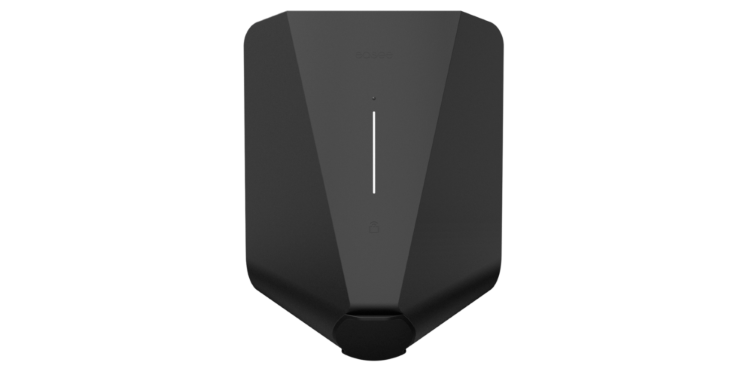
Why is Easee One best for beginners?
The Easee One and its app are a piece of cake for customers, who have said in their droves that they were quickly able to understand its controls.
This Norwegian company has designed a machine that lives up to its name.
The Easee One and its app are simple to use, making this the perfect entry into the market for someone who doesn’t know all the technical ins and outs of EV chargers.
At 1.5 kg, it’s one of the lightest machines available, and its 5,200 cm³ makes it the fourth-smallest charger on our list.
You also don’t need to worry about compatibility, as the Easee One can charge any car, on any power grid, and engineers have reported that it’s easy for them to install.
And it’s impressively customisable. You can toggle between tethered and untethered at the press of a button, and the product comes in five colours – white, grey, red, dark blue, and black – that can be changed simply by replacing the cover.
Easee One pros & cons
Pros
- Perfect for beginners
- Easy to install
- Compatible with all cars
Cons
- Not the cheapest
5. Best for communication: Hypervolt Home 2.0 (£1,030)
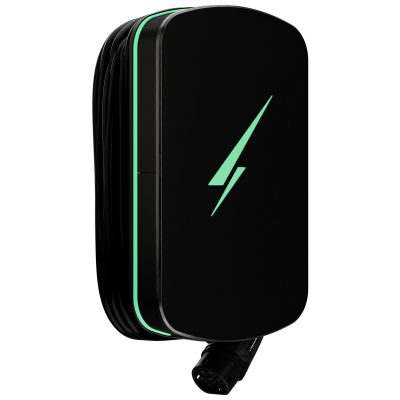
Why is Hypervolt Home 2.0 best for communication?
Hypervolt’s Home 2.0 charger comes with innovative colour-coded lights that quickly tell you whether it’s on, off, charging, on standby, or if there’s a fault – making it unbeatable for communication.
The Hypervolt Home 2.0 is an excellent, futuristic-looking charger that comes with all the usual bells and whistles.
It has a top-notch app, a 7 kW charging capacity, and a cover that protects it against our fickle weather.
But the feature that makes this British product stand out is its status light indicators.
Its lightning bolt logo and ring of LED lights turn different colours if it’s on, off, charging, on standby, or if there’s a fault. The bright red, green, blue, or purple light makes it easy to see what it’s doing at a glance.
This charger is a little more expensive than the average, but if colour-coding is your go-to technique to make your life easier, the Hypervolt Home 2.0 is the one for you.
Hypervolt Home 2.0 pros & cons
Pros
- Excellent app
- Fantastic communication via colour-coded lights
Cons
- Relatively expensive
- On the heavier side
6. Best for communication: Hypervolt Home 2.0 (£1,030)
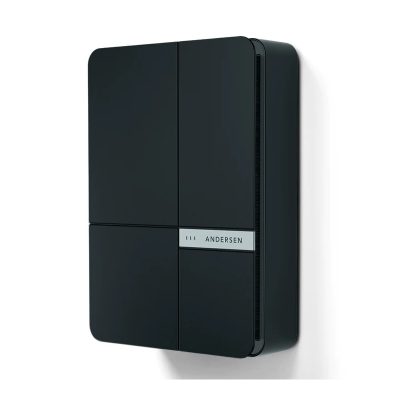
Why is Andersen A2 best for appearance?
The Andersen A2 is gorgeous, with a sleek design that can be customised to your taste. The stainless steel cover is available in eight colours, or you can opt for any of the four wood finishes.
This is the most stylish charger on the market, hands-down, and with a price tag to match. An electric car charging point costs less, usually – but this one’s special.
You can choose a stainless steel finish in eight different colours, or go for one of four eco-friendly wood options.
It’s also extremely big. Its 25,400 cm³ area makes it 20 times larger than the Ohme Home – but it’s not an eyesore.
If you have the space, it makes a good-looking addition to your home – and unlike most other chargers, you should be able to match it to your style.
It has attractive smart capabilities, too. Andersen’s Konnect app allows you to create a schedule for your charger, lock it remotely, and analyse your past charging sessions.
It also has the ability to reach 22 kW, if your home is one of the few in the UK to have three-phase electricity supply. If you think you do have three-phase supply, ask a professional to confirm it.
Andersen A2 pros & cons
Pros
- Most stylish charger
- 12 aesthetic choices
- Can reach 22 kW if you have a three-phase supply
Cons
- Extremely expensive
- Huge
- Much heavier than most, at 11kg
7. Best for budget: Project EV EVA-07S-SE (£730)
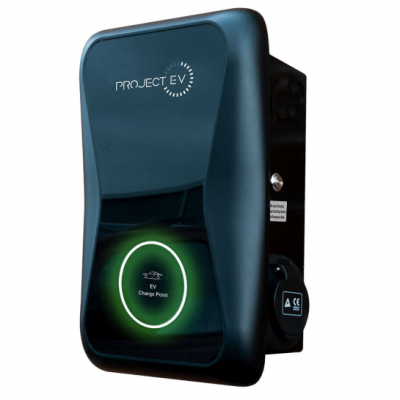
Why is Project EV EVA-07S-SE best for budget?
The Project EV EVA-07S-SE typically costs considerably less than its top-tier competitors, while still offering the longest warranty on the market – though it is pretty large.
This charger, which is produced in China and licensed to Project EV in the UK, is also known as the ATESS or Growatt, which can make things confusing.
But if you’re looking for a cut-price budget option, this is your knight in solid if unspectacular armour.
You can use the app to start and stop it charging remotely, check how much it’s charged, and organise charging schedules to use the cheapest energy – the basics, to put it simply.
It also comes with an extra two-year parts warranty, on top of the industry standard three-year warranty.
Are there drawbacks? Of course – but they may not bother you.
Firstly, it’s the second-largest machine on this list, at 13,200 cm³. That’s around half the size of the Andersen A2, but it’s still big.
With Project EV’s previous model, the EVA-07S-S, you needed to buy an integrated earth rod called Pro Earth for an extra £84 – but this new model comes with Pro Earth as standard.
If you have a solar array and are willing to pay a bit more, this model can use surplus solar power to power your vehicle.
However, its solar abilities aren’t well-known, and we’d recommend choosing a charger with a record of using solar energy to a higher level, like the Zappi or EO Mini Pro 2.
If you’re after an inexpensive product and you have the space to house this husky machine, the EVA-07S-SE could be the charger for you.
Project EV EVA-07S-SE pros & cons
Pros
- Budget option
- Five-year parts warranty
Cons
- Considerably larger than average
- Not particularly attractive
8. Best for app: Rolec WallPod (£1,179)
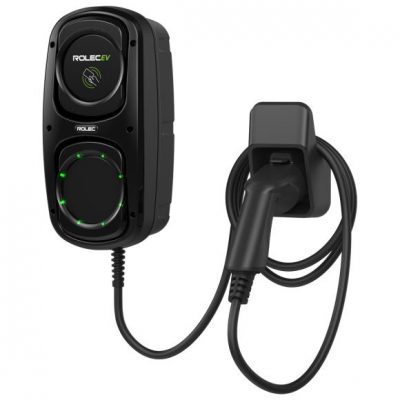
Why is Rolec WallPod best for app?
The Rolec WallPod’s ev.energy app is the most highly rated on the market, allowing customers to control all their device’s cutting-edge features in a straight-forward, reliable way.
This model is decent value for money, despite its unusually steep price for Rolec products, with smart capabilities that you won’t find in some other top chargers.
By using the highly rated ev.energy app, you can start and stop the charger from anywhere in the world, organise charging schedules, and integrate your machine with your electricity tariff to make sure it uses your energy when it’s cheapest.
Rolec’s machine isn’t particularly attractive – it comes across as a slightly futuristic petrol pump, if anything, and it’s on the chunky side at 9,300 cm³ – but it’s a solid product.
Rolec sells directly to electrical wholesalers, meaning you can’t buy a home charger directly from the company – so make sure you choose an approved installer.
Rolec WallPod pros & cons
Pros
- Highly rated app
- Reliable product & company
- Light machine despite its size
Cons
- More expensive than average
- Looks like a futuristic petrol pump
- Bigger than most
9. Best for security: EO Mini Pro 2 (£945)
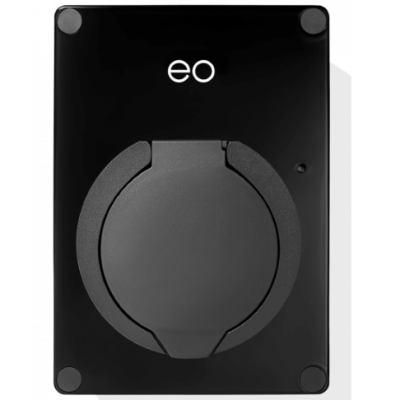
Why is EO Mini Pro 2 best for security?
The EO Mini Pro 2 gives you the power to lock your device, meaning no-one can use it at an unapproved time. If you’re worried about anyone stealing charge from you, this is your best option.
This chargepoint is very small – just 17.5 cm by 12.5 cm by 12.5 cm, giving it a total size of 2,700 cm³.
EO says it’s the smallest smart charger in the world, though it appears to have been overtaken by the Wallbox Pulsar Plus.
Nevertheless, its size makes it easy to hide in plain sight, though among the four colours it comes in is the extremely bright EO blue, so you can show it off if you want.
Its subtle nature is complemented by the fact that it’s one of an increasing number of electric vehicle (EV) chargers that don’t need an earth rod.
And thankfully, unlike the original EO Mini Pro, this model can be linked to EO’s own app.
The EO Smart Home app allows you to choose when you want your vehicle to power up – a feature which effectively allows you to lock your machine, as it won’t dispense charge at any other time.
If you have solar panels, you won’t have as many options as with the Zappi charger, but you can still use the app to make sure you’re using solar energy to charge your car.
However, it does still require an earth rod – an unusual drawback at a point where most chargers have in-built earthing technology.
EO Mini Pro 2 pros & cons
Pros
- Can be locked remotely
- Comes in four colours
- Light, at 1.3 kg
Cons
- Requires an earth rod
10. Best for future-proof: EVBox Elvi (£960)
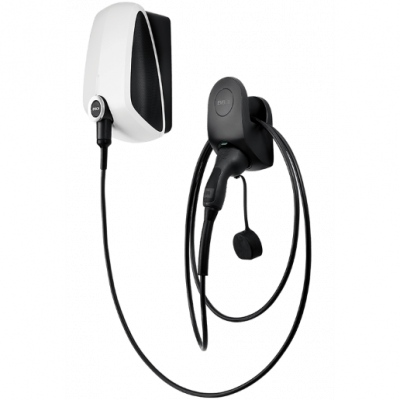
Why is EVBox Elvi best for future-proof?
The EVBox Elvi uses a modular design, meaning you can change it up if you want to charge a different vehicle, or even multiple cars.
The Elvi is simple to use, so if you’re an electric vehicle beginner – and you can afford it – this is one of your best bets, though you will need an earth rod to use it.
The EVBox Connect app is good though – you can use it to charge your car, or simply plug in, and your vehicle will automatically start charging.
You can use the app to balance your car’s charging patterns with the rest of your home’s energy usage.
It can also work using 3G, which isn’t super-modern, but does give it a back-up option if your wifi network goes down.
Its modular design also makes it easy to alter so it can charge new cars, making it future-proof and meaning it could be useful past its standard three-year warranty.
You can also contribute to the fight against climate change by getting an Elvi.
EVBox, which has sold 100,000 chargers in 55 countries, has pledged to plant a tree for every new charger it installs.
EVBox Elvi pros & cons
Pros
- Modular design makes it future-proof
- Good for beginners
- EVBox has pledged to plant a tree for every new charger it installs
Cons
- Requires an earth rod
- Relatively heavy, at 7 kg
11. Best for remote support: Pod Point Solo 3 for Home (£949)
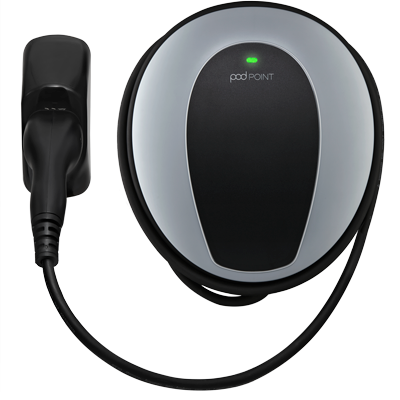
Why is Pod Point Solo 3 for Home best for remote support?
The Pod Point Solo 3 can be connected to your wifi network, allowing Pod Point’s support team to quickly solve any issues with your device, and send software updates to improve its functionality.
Pod Point has been manufacturing chargers for more than a decade, which means it was a pioneer in the burgeoning EV industry.
The company is also one of the biggest in the UK, and owns 13.1% of public chargepoints.
Its Solo 3 has some useful features, like auto power balancing, which alters your charging speed to ensure your home isn’t overloaded.
It also receives software updates if you connect it to a wifi network, which means it’ll get better and better over time – and if there’s an issue with the machine, a support team can fix it remotely.
You won’t need to purchase a separate earth rod for the charger, which is another plus point. It’ll reduce the installation price, and means you won’t need to get a rod driven into the ground outside your home.
The machine also pairs with the Pod Point App, but this app isn’t as highly rated as most others on the App Store or Google Play – and for good reason.
It allows you to monitor your home charging sessions, but it’s clearly been built with public chargepoints in mind, which isn’t what you want after buying a shiny new home charger.
The charger is decent, and it comes from a company you can trust – but it’s not the best of the best.
Pod Point Solo 3 for Home pros & cons
Pros
- Trustworthy manufacturer
- Receives software updates over wifi
Cons
- App was built for public chargers – and it shows
- Large and heavier than average
How we chose the best EV chargers
Our team of four researchers spent 36 hours analysing 21 home EV chargers on the basis of 16 different factors.
Here are the main factors and why they’re important to take into account before you make your purchase.
1. Affordability
There’s little point recommending a selection of electric vehicle home chargers if you don’t include options for different price points.
For this reason, we wanted to identify a premium charger that can be purchased for a significantly cheaper price than the average.
In the shape of Project EV’s EVA-07S and Myenergi’s zappi, we found two.
2. Ease of use
Everyone should be able to use electric vehicle home chargers straight away, without having to set aside piles of time to endure a steep learning curve.
We rated these chargers according to how easy they were to use, factored into account how many different types of electric car they could charge, and sourced feedback from installers about how quick and simple they were to set up.
3. Warranty
You can break even on your home charger in about two years, on average – but it has to last that long.
If it breaks before that point without an adequate warranty, this money-saving exercise becomes frustrating and pointless.
So we looked into each product’s terms and conditions to ensure that all chargers on this list come with at least a three-year warranty.
4. App
We believe the point of an electric vehicle charger’s app is to make it easy to control the charger, ensure its security, and get support when needed.
We investigated chargers’ apps with this in mind, and ended up creating three categories based on these attributes. That’s how important a good app is.
5. Money-saving capabilities
Smart technology is well-established at this point, so your charger should be able save you money by syncing up with your electricity tariff and using energy at its cheapest point in the day.
This feature will become even more profitable in the coming years, as more and more energy companies introduce variable tariffs that change every half-hour.
The average driver can save hundreds of pounds by using a charger with this ability, like the Ohme Home Pro and Myenergi zappi – our current champions in this area.
6. Appearance
A charger’s appearance is important. Like most big additions to your home, you want it to look good and match your aesthetic.
At the very least, you’ll want to be able to hide it away, making a small, light machine preferable over a heavy, chunky product.
We therefore analysed the way each charger looks, how customisable they are, and their size and weight.
Aesthetics can also have a practical application. Hypervolt Home 2.0’s colour-coded lights were so useful, they forced us to create a new category to recognise their powers of communication.
7. Future-proof
Ideally, you should be able to keep the same electric vehicle charger when you buy a new car – even if that car doesn’t exist yet.
With that in mind, we looked into how future-proof different chargers are against advancements that’ll make charging cheaper and considerably quicker.
EVBox’s ELVi has a modular design that we believe makes it adaptable to any realistic development in electric vehicles.
Next steps
By now, you should know everything you need to about the best and most cost-effective home chargers on the market.
Getting a home charger could save you thousands of pounds over the lifetime of your electric car – and even more when vehicle-to-grid chargers become widely available.
If you want to join the growing number of Brits getting home charging stations, pop your details in our free form to hear from our expert installers, and find out how much it would cost you.


